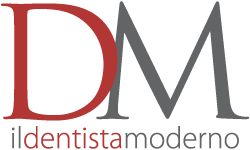Autori
 Rolando Crippa
Rolando Crippa
Prof. a c. Master Internazionale II Liv. Laser Dentistry Università Cattolica del Sacro Cuore di Roma
 Sabrina De Michele
Sabrina De Michele
Odontoiatra, Libera professionista, ISI Milano
 Giulia Capella
Giulia Capella
Odontoiatra, Libera Professionista, ISI Milano
 Francesca Angiero
Francesca Angiero
Prof. Associato Università degli Studi di Genova
Corrispondenza: rolcrip@icloud.com
Abstract
L’utilizzo del Laser (Light Amplification by Stimulated Emission of Radiation) per la cura delle affezioni delle mucose orali ha avuto inizio circa 50 anni fa con l’impiego del laser a CO2, seguito successivamente da quello del laser a diodi, del Nd:YAG e quindi del laser ad Erbium.
Verso la fine degli anni Novanta, l’utilizzo è stato esteso anche alle cure dei tessuti duri, quindi dei denti e delle ossa mascellari.
La luce laser possiede caratteristiche particolari che la differenziano dalla luce comune. I diversi tipi di laser si distinguono in base allo stato di aggregazione del materiale attivo in laser allo stato solido, liquido e gassoso.
Una menzione a parte meritano i laser a semiconduttore che saranno trattati con i laser a diodi.
Laser technology: new treatments and protocols in dentistry
The use of Laser (Light Amplification by Stimulated Emission of Radiation) for the treatment of oral soft tissue diseases started about 50 years ago with the use of the CO2 laser, subsequently followed by the diode and Nd: YAG lasers and therefore the Erbium laser.
At the end of the 1990s, its use was also extended to treat hard tissues, teeth, and jaw bones. Laser light has particular characteristics that differentiate it from common light.
The different types of lasers are distinguished according to the state of aggregation of the active material in solid, liquid, and gaseous lasers.
Semiconductor lasers deserve a separate mention and will be treated with diode lasers.
Questo contenuto è riservato agli abbonati a Il Dentista Moderno.
Abbonati e continua a leggere su DM Club, l'area premium de Il Dentista Moderno





